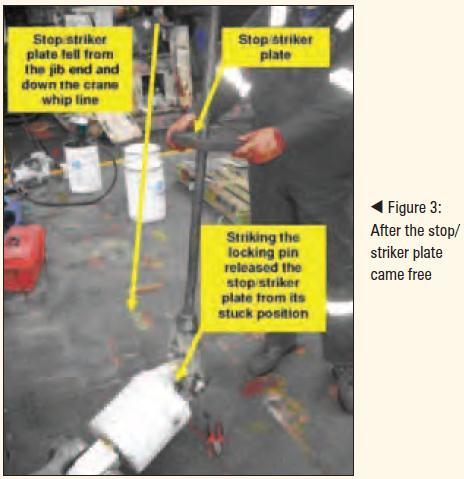201111 Hand injury caused by falling crane stop/striker plate

Edited from IMCA Safety Flash 11/09
Two contractor workers were carrying out maintenance of a vessel's crane. With the crane hook and ball weight lowered on the deck and the whip line (also known as cargo runner wire) slack, one of the workers was attempting to disconnect the wire rope from the ball weight, during which it was necessary to repeatedly strike the locking pin that was securing the shackle pin nut.
At some time in the past, the crane had undergone a minor modification to the initial design whereby a stop/striker plate with safety limit cut-off switch combination was fitted on the crane jib end. This arrangement was designed to operate when the ball weight and hook assembly came close to the jib end.
Unknown to the ship's staff and the workers, the stop/striker plate at the jib end had become stuck. As the dismantling work was being undertaken at the bottom end of the wire rope, the plate (weighing five kg) suddenly became free and slid down the wire at great speed. One contractor sustained a fractured thumb, the other a minor first aid injury.
Results of investigation
No formal risk assessment was conducted when the stop/striker plate was fitted to the crane jib, including the need for properly securing the plates in position;
There was no documentation on board for the design and installation of stop/striker plates;
Associated task-based risk assessment and toolbox talk did not include information relating to the existence of striker plates;
Third parties were not advised about ongoing problems with stop/striker plates sticking at the jib end;
Safety observations previously raised regarding the possibility of stop/striker plates sticking to the jib-end had not been fully addressed.
